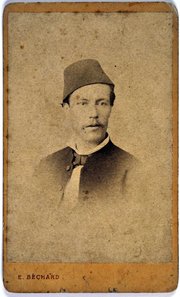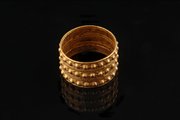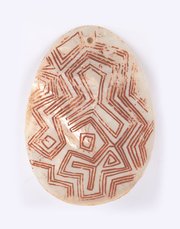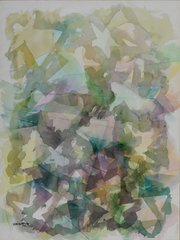
Ka‘ba inner door curtain
Museum of Islamic Art
- Title:
- Ka‘ba inner door curtain
- Production place:
- Egypt
- Date:
- 1903 - 1904
- Period:
- Ottoman
- Title:
- Ka‘ba inner door curtain
- Production place:
- Egypt
- Date:
- 1903 - 1904
- Period:
- Ottoman
- Material:
- Cotton, Silk, Metallic thread
- Technique:
- Weaving, Applique, Embroidering, Sewing
- Dimensions:
- 240 × 180 cm
This textile was part of the variety of textiles produced for decorating the Ka‘ba and changed every year. This specific example was used to cover the inner door of the Ka‘ba, called Bab al-Tawba (‘Door of Repentance’), which lead to its roof. Although the most visible and well-known fabrics are those covering the sacred monument (kiswa al-sharifa or ‘sacred cloth’), the interior was also decorated with heavily embroidered cloth. The textiles were sent as gifts from Cairo in a palanquin (mahmal), at the head of the procession of the pilgrims’ caravan to Mecca. A workshop dedicated only to the production of such textiles, the Dar al-Kiswa, was established in Cairo in 1233 AH / 1817 CE by the Ottoman governor Muhammad ‘Ali Pasha. Embroidered with gold on black and red silk, the piece includes many Qur’anic inscriptions, including a section of v. 25 on God’s mercy from Surat al-Shura (Q42), Ayat al-Kursi (Q2: 155), the shahada and invocations to the Prophet. The tughra located on the lower register indicates that the textile was commissioned by Sultan Abdülhamid (r. 1293-1327 AH/1876-1909 CE) and is dated 1321 AH / 1903-1904 CE.



